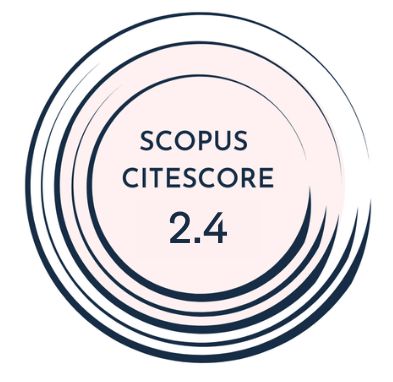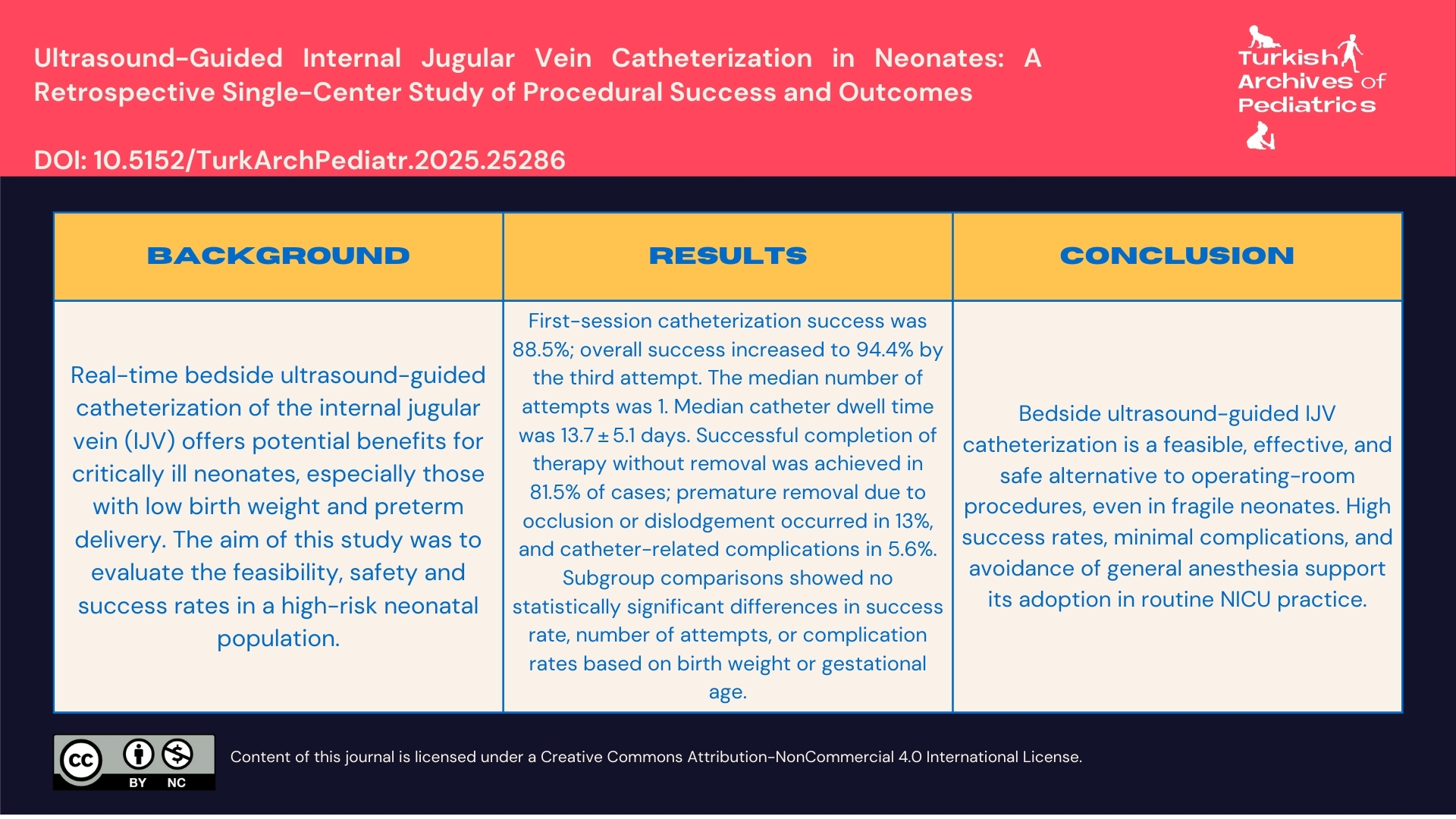Objective: Real-time bedside ultrasound-guided catheterization of the internal jugular vein (IJV) offers potential benefits for critically ill neonates, especially those with low birth weight and preterm delivery. The aim of this study was to evaluate the feasibility, safety, and success rates in a high-risk neonatal population.
Materials and Methods: Fifty-four neonates (birth weight 500-4010 g; 61% preterm) who underwent ultrasound-guided IJV catheterization were retrospectively analyzed in the Şişli Hamidiye Etfal Training and Research Hospital. The primary outcome is successful usage of the catheter. Other key outcomes include first session and overall successful catheterization rates, number of attempts, catheter dwell time, and complication rates. Subgroup analyses were performed based on birth weight (<2500 g vs. ≥2500 g) and gestational age (preterm vs. term).
Results: First-session catheterization success was 88.5%; overall success increased to 94.4% by the third attempt. The median number of attempts was 1. Median catheter dwell time was 13.7 ± 5.1 days. Successful usage of the catheter by completion of therapy without removal was achieved in 81.5% of cases; premature removal due to occlusion or dislodgement occurred in 13%, and catheter-related complications in 5.6%. Subgroup comparisons showed no statistically significant differences in success rate, number of attempts, or complication rates based on birth weight or gestational age.
Conclusion: Bedside ultrasound-guided IJV catheterization is a feasible, effective, and safe alternative to operating-room procedures, even in fragile neonates. High success rates, minimal complications, and avoidance of general anesthesia support its adoption in routine neonatal intensive care unit practice.
Cite this article as: Zübarioğlu AU, Bülbül A, Coşkun Yİ, et al. Ultrasound-guided internal jugular vein catheterization in neonates: A retrospective single-center study of procedural success and outcomes. Turk Arch Pediatr. Published online October 14, 2025. doi:10.5152/TurkArchPediatr.2025.25286.


.jpg)
.png)


